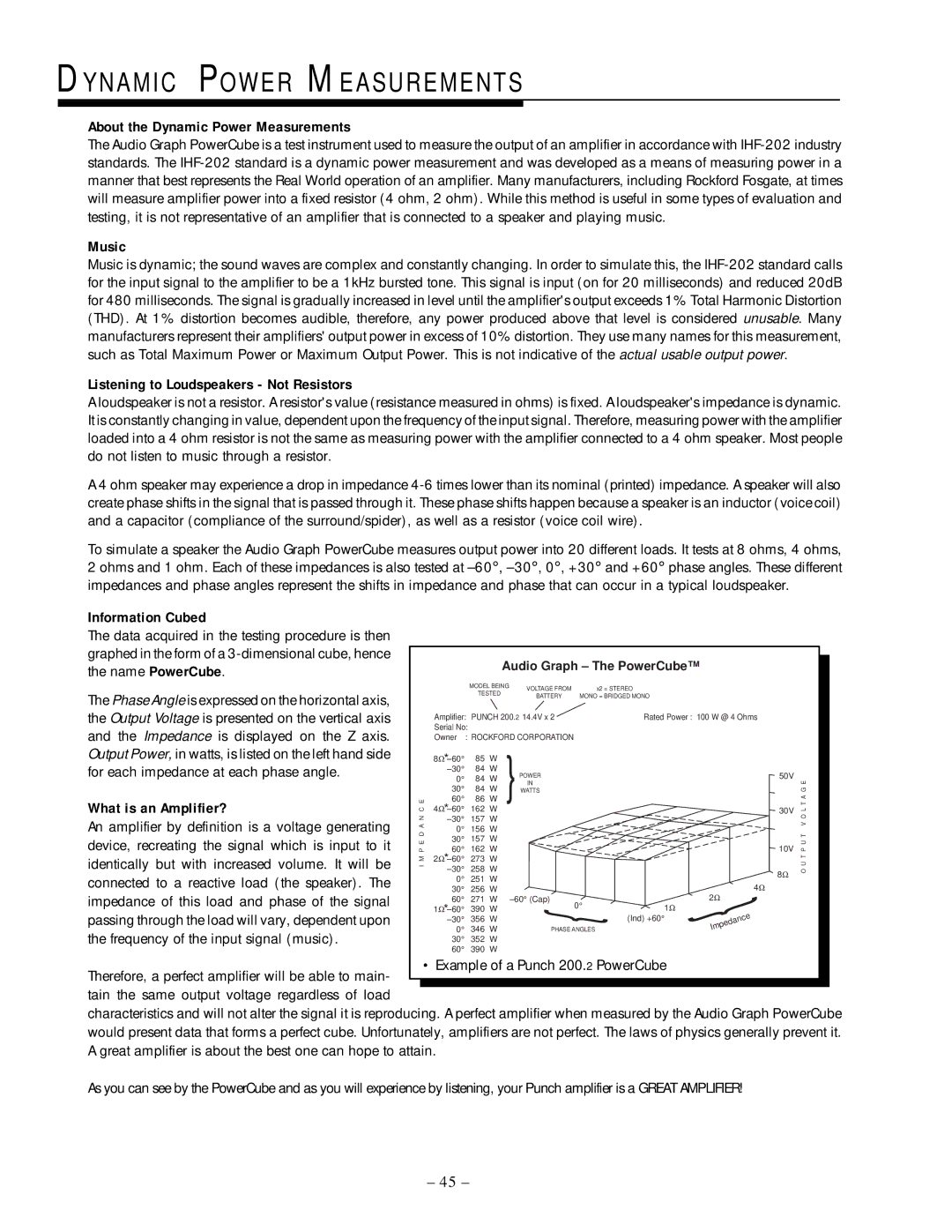250.2 specifications
The Rockford Fosgate 250.2 is a powerful and versatile car amplifier known for its performance and reliability. As part of Rockford Fosgate’s renowned line of audio equipment, the 250.2 is engineered to enhance the listening experience in vehicles, providing a fantastic balance of power, clarity, and durability.This amplifier delivers an impressive 250 watts of power, making it suitable for both beginner audiophiles and seasoned enthusiasts who seek to elevate their car audio system. The 250.2 is a two-channel amplifier, which means it can power two speakers or one subwoofer. Utilizing a class A/B topology, it ensures high efficiency while minimizing distortion, resulting in clean and powerful audio output.
One of the standout features of the Rockford Fosgate 250.2 is its Signal Sense turn-on technology. This feature allows the amplifier to automatically turn on when it detects a signal from the head unit, eliminating the need for a manual switch. Additionally, the built-in remote gain control allows users to adjust the amplifier’s output level easily, providing a customizable audio experience tailored to their preferences.
The 250.2 is equipped with an adjustable crossover that can be set to high-pass, low-pass, or full-range modes. This flexibility permits users to fine-tune the frequencies sent to their speakers, optimizing sound quality and performance. Further enhancing its capabilities, the amplifier also includes built-in variable bass boost that allows users to amplify low frequencies for a more impactful bass response.
Constructed with a durable aluminum heatsink, the Rockford Fosgate 250.2 maintains optimal temperature during operation, ensuring long-lasting performance and minimizing thermal issues. The amplifier also features RCA inputs, making it compatible with a wide range of audio sources, enhancing its versatility for various setups.
In summary, the Rockford Fosgate 250.2 is a reliable and robust car amplifier that combines high power output with advanced technologies and user-friendly features. Its efficient design, customizable settings, and quality construction make it an excellent choice for anyone looking to improve their vehicle's sound system. Whether for day-to-day driving or road trips, the Rockford Fosgate 250.2 provides an audio experience that is both powerful and enjoyable, reinforcing Rockford Fosgate's reputation as a leader in the car audio industry.

